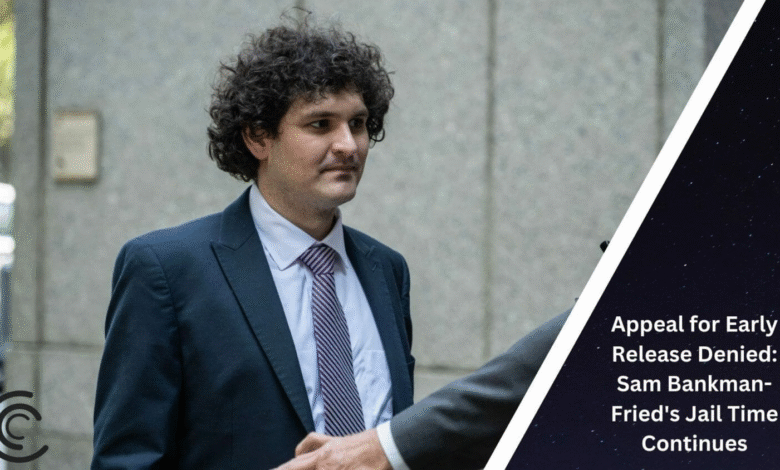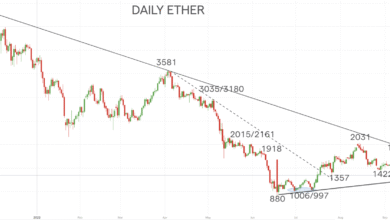Sam Bankman-Fried Early Release Could Happen Four Years Soon

Sam Bankman-Fried’s early release has become a hot topic in the ongoing discussions surrounding the FTX fraud case. The former CEO, sentenced to 25 years in prison for orchestrating a significant scheme that misappropriated billions in customer funds through his hedge fund, Alameda Research, now has the potential to return to the outside world sooner than expected. Reports suggest that if he qualifies for good conduct time and engages in approved prison release programs, Bankman-Fried could be eligible for release as early as December 14, 2044, which is over four years earlier than his original sentence. This recent news has sparked debate about the effectiveness of prison reform and rehabilitation options available to high-profile inmates. As the legal ramifications of the Bankman-Fried sentence continue to unfold, the public and media are closely following every development relating to the case and its implications for justice.
In the realm of financial crime and legal proceedings, the prospect of Sam Bankman-Fried’s potential premature release from incarceration raises significant questions. The resolution of the FTX scandal, which has captured the attention of both the public and regulatory bodies, showcases the serious implications of alleged misconduct in the cryptocurrency space. As discussions surface about bank fraud enablers and the broader consequences stemming from such transgressions, the fate of Bankman-Fried stands at the center of this turmoil. Observing his journey through the judicial system not only highlights the complexities of the criminal justice process but also invites scrutiny of the prison reform initiatives that may allow for earlier exits. Understanding the various factors influencing Bankman-Fried’s situation is essential in navigating the landscape of modern economic crimes.
Sam Bankman-Fried’s Imprisonment and Potential Early Release
Sam Bankman-Fried, the former CEO of cryptocurrency exchange FTX, has found himself at the center of one of the most notorious fraud cases in recent history. Convicted on multiple counts—including fraud and conspiracy—he was sentenced to 25 years in prison due to his significant role in misappropriating an astounding $11 billion of customer funds, which were controversially funneled to his hedge fund, Alameda Research. His conviction not only reflects his actions but also sheds light on the broader implications of financial misconduct in the crypto market.
Recent news indicates that Bankman-Fried could potentially be released from prison as early as December 14, 2044, contingent on his adherence to good conduct and participation in prison release programs. This anticipated early release has sparked a range of discussions regarding the justice system’s treatment of financial crimes compared to other types of offenses. The ongoing narratives around cases like Bankman-Fried’s reflect a deep public interest in how the legal ramifications of high-profile financial frauds are carried out.
The Impact of the FTX Fraud Case on Financial Regulations
The FTX fraud case, which captivated global attention, has raised critical questions regarding the effectiveness of current financial regulations within the cryptocurrency industry. The revelations surrounding Bankman-Fried’s misappropriation of customer assets prompted an urgent call for regulatory reform, as investors and consumers alike faced severe losses in a rapidly evolving market. As authorities sift through the remnants of the case, industry leaders advocate for stronger oversight to prevent similar scandals in the future.
The fallout from the Bankman-Fried scandal highlights the ongoing necessity for transparent practices among crypto exchanges. Regulatory bodies are now under significant pressure to implement stricter guidelines aimed at protecting investors, especially as the popularity of digital assets continues to grow. The conversation surrounding the FTX debacle is not merely a legal matter; it marks a pivotal moment in reshaping financial accountability and consumer trust in the burgeoning crypto landscape.
Understanding the Role of Alameda Research in the Scandal
Alameda Research, the trading firm co-founded by Sam Bankman-Fried, was integral to the operations of FTX and played a critical role in the fraud scheme tied to the mismanagement of customer funds. The allegations suggest that Alameda was used to mask the true financial health of FTX, raising serious ethical and legal questions about the firm’s practices. As investigations proceed, understanding the interplay between FTX and Alameda Research becomes crucial for making sense of the broader implications of this scandal.
The links between Alameda Research and the FTX fraud case present a complex web of trust that was ultimately betrayed. This deception not only impacted FTX customers but also led to sweeping implications for the cryptocurrency sector as a whole. As stakeholders seek accountability, examining the relationship between these organizations will be vital in unveiling how systemic failures allowed such fraudulent activities to flourish.
Legal Consequences and Future Implications for Bankman-Fried
Sam Bankman-Fried’s legal challenges extend beyond his current sentencing. The complexity of fraud investigations in cases such as his often leads to protracted legal disputes, and Bankman-Fried may face further scrutiny even during his time in prison. Experts suggest that maintaining transparency and accountability could lead to harsher repercussions for financial misconduct in the future. Observers of the case are keenly watching to see how the judicial system treats individuals involved in high-stakes finance.
Additionally, the potential for early release raises questions about the effectiveness of punishment in deterring financial crime. Critics argue that if high-profile figures like Bankman-Fried can potentially serve less than their sentence, this might undermine public trust in the justice system’s ability to handle economic fraud seriously. Analyzing the outcomes of Bankman-Fried’s case may provide critical insights into the evolution of penalties associated with financial crimes in the digital age.
Bankman-Fried’s Case and its Role in Shaping Justice For Financial Crimes
The case against Sam Bankman-Fried exemplifies the urgent need for evolving our legal framework surrounding financial crimes. The intersection of technology and finance creates unique challenges for legal systems worldwide, and the outcomes of this high-profile case could serve as a benchmark for future legal actions in the cryptocurrency space. The discussions stemming from his case may inspire much-needed enhancements in regulatory policies that directly address the complexities of digital transactions.
Lawmakers and regulators are now tasked with carefully evaluating the implications of the case. There’s widespread acknowledgment that current measures might not adequately deter similar frauds, prompting discussions for reform. As such, Bankman-Fried’s case will likely have lasting effects on financial regulations, signaling a possible shift towards more stringent oversight in the cryptocurrency domain.
Public Reaction and Perceptions of Sam Bankman-Fried’s Sentence
Public sentiment surrounding Sam Bankman-Fried’s sentence has been overwhelmingly critical, with many expressing outrage over the sheer scale of the fraud and its devastating effects on thousands of investors. This case stands as a potent reminder of the risks associated with investing in high-volatility environments like crypto, where the promise of quick gains can overshadow fundamental due diligence. As news spreads about his potential early release, many question whether justice has truly been served.
The conversation extends beyond mere outrage; it reflects a growing awareness regarding the importance of robust consumer protection in the financial sector. Many advocates argue that leniency in sentences for financial crimes could embolden similar wrongdoing in the future. Thus, engaging the public in discussions about reforming accountability standards becomes more vital now than ever, ensuring that those in positions of power within the financial landscape are held responsible.
Exploring Prison Release Programs and Their Criteria
The possibility of Sam Bankman-Fried’s early release highlights the often complex nature of prison release programs in the United States. These programs, often designed to promote rehabilitation and reduce recidivism, allow inmates to qualify for early release based on good conduct and participation in various programs. However, eligibility criteria can vary significantly, leading to debates over fairness and the effectiveness of such programs in addressing systemic issues.
In Bankman-Fried’s case, the scrutiny surrounding early release raises questions about the criteria used to evaluate inmate behavior and potential readiness for reentry into society. Participants in these programs are generally required to demonstrate a commitment to personal development and accountability. Therefore, examining the specifics of these criteria could provide insights into broader discussions about reforming the prison system to enhance its focus on rehabilitation.
The Broader Impact of Crypto Fraud on Investor Trust
The FTX fraud case led by Sam Bankman-Fried serves as a wake-up call for investors and regulators alike, highlighting the vulnerabilities within the cryptocurrency market. As trust in digital assets wavers, the implications of such colossal frauds can have far-reaching effects on investor confidence, potentially stifling innovation within the crypto space. With significant losses incurred by individual investors, navigating this shifting landscape requires a cautious approach to building a more resilient financial framework.
As discussions continue about how to safeguard individuals against future fraud, it becomes imperative for the industry to implement better standards of transparency and ethics. The lessons learned from the FTX scandal may inspire heightened diligence among investors, compelling them to thoroughly research exchanges and projects before committing funds. This emphasis on due diligence could be crucial in restoring trust in the burgeoning yet unstable world of cryptocurrency.
The Role of Media Coverage in Shaping Financial Crime Narratives
Media coverage surrounding Sam Bankman-Fried has significantly influenced public perception regarding financial crimes. The portrayal of his story exemplified the intersection of media sensationalism and the nuanced realities of economic fraud, often leading audiences to develop strong opinions based on headlines rather than comprehensive analysis. This dynamic showcases the importance of responsible journalism in informing the public while also fostering a critical dialogue about financial integrity.
As the narrative evolves, the ongoing media discourse surrounding the FTX scandal and Bankman-Fried’s actions highlights the responsibility media organizations bear in educating the public about the complexities of financial crimes. Meaningful reporting can aid in demystifying the cryptocurrency landscape, equipping investors with the knowledge needed to navigate these turbulent waters cautiously. Ultimately, fostering informed discussions can contribute to a more resilient financial environment.
Frequently Asked Questions
What is the latest news on Sam Bankman-Fried early release status?
As per recent reports, former FTX CEO Sam Bankman-Fried could potentially be released from prison more than four years early, as early as December 14, 2044, if he qualifies for good conduct time and participates in specific prison release programs.
How did the FTX fraud case affect Sam Bankman-Fried’s potential early release?
Sam Bankman-Fried was sentenced to 25 years for his involvement in the FTX fraud case, which involved misappropriating over $11 billion in customer funds. His conviction on seven counts of fraud and conspiracy impacts his early release eligibility, hinging on his behavior and participation in prison programs.
What charges were brought against Sam Bankman-Fried in the FTX fraud case?
In the FTX fraud case, Sam Bankman-Fried faced seven charges of fraud and conspiracy due to orchestrating a scheme that misappropriated customer funds for his hedge fund, Alameda Research. This led to a substantial prison sentence, but he may still qualify for early release.
What are the details surrounding Bankman-Fried’s sentence and possible early release?
Sam Bankman-Fried was sentenced to 25 years in prison for fraud linked to the FTX scandal. If he exhibits good behavior and engages in prison programs, he could qualify for an early release, potentially reducing his time in prison by more than four years.
What programs could allow Sam Bankman-Fried to qualify for early release?
To qualify for early release, Sam Bankman-Fried would need to participate in certain prison release programs and demonstrate good conduct during his incarceration, as mandated by the Bureau of Prisons.
When is Sam Bankman-Fried expected to be released if granted early release?
If Sam Bankman-Fried qualifies for early release under good conduct time regulations, he could potentially leave prison as early as December 14, 2044, although this is contingent upon his adherence to prison rules and participation in specific programs.
Who else was involved in the Alameda Research scandal along with Bankman-Fried?
Alongside Sam Bankman-Fried, Caroline Ellison was a key figure in the Alameda Research scandal. She received a two-year sentence for her role in the fraud and is expected to be released in May 2026.
What implications does Sam Bankman-Fried’s conviction have for the cryptocurrency industry?
Sam Bankman-Fried’s conviction for fraud has significant implications for the cryptocurrency industry, highlighting the risks associated with mismanagement of customer funds and increasing scrutiny on crypto exchanges and hedge funds like Alameda Research.
| Key Point | Details |
|---|---|
| Sentencing | Sam Bankman-Fried sentenced to 25 years in prison. |
| Fraud Scheme | Involved misappropriation of customer funds amounting to $11 billion. |
| Release Date | Could be released as early as December 14, 2044. |
| Eligibility for Early Release | If he qualifies for good conduct and participates in prison programs. |
| Co-conspirator Sentencing | Caroline Ellison sentenced to two years, expected release in May 2026. |
Summary
Sam Bankman-Fried’s early release could occur sooner than expected, as he is eligible for a reduction in his sentence. After being sentenced to 25 years for a massive fraud scheme, the potential for his release in December 2044 hinges on his good behavior and participation in prison programs. This development brings attention to the concerns surrounding justice in cases involving financial fraud, and marks a significant point in the ongoing discussions about accountability and reform in the financial sector.




